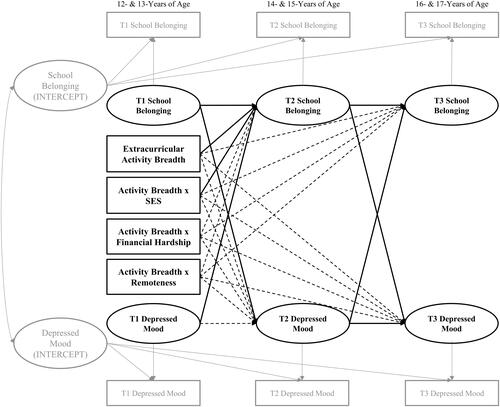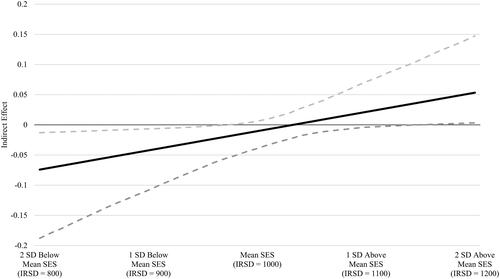Figures & data
Table 1. Descriptive statistics, Cronbach’s Alpha, and Bivariate Correlations between extracurricular activity participation, socioeconomic status, school belonging, and peer connectedness.
Table 2. Regression coefficients exploring the longitudinal relationship between structural inequities, extracurricular activity breadth, school belonging, and depressed mood.
Figure 1. The full RI-CLPM depicting the between- and within-person effects of school belonging and depressed mood across adolescence. Solid black lines denote significant pathways (p < .05), dashed lines denote non-significant pathways. Residuals, contemporaneous covariances, and covariates are omitted for parsimony.

Figure 2. The Indirect Effect and 95% Confidence Intervals of Extracurricular Activities (12-13 years of age) on Depressed Mood (16-17 years of age) via School Belonging (14-15 Years of Age) depending upon Community Socioeconomic Status. Confidence intervals that do not contain zero (solid grey line) are statistically significant (p < .05).

